Sit Bone Pain
What is a Sit Bone Pain?
Sit bone pain, also known as ischial tuberosity pain, is a sharp or dull pain that occurs in the lower buttocks, near the tailbone.
It is caused by inflammation or irritation of the ischial bursae, which are fluid-filled sacs that cushion the ischial tuberosities, the two bony prominences on the underside of the pelvis that we sit on.
What Are Your Sit Bones?
The two round bones that protrude from the bottom of the pelvis are known as the ischial tuberosity, or Sitz bones. These are the bones upon which we sit. The ischium, pubis, and ilium are the three strong bones that make up the pelvis. The waist bone, or iliac crest, is formed by the tall, thin ilium bones.
The pubic symphysis connects the small anterior bones, which together make up the pubis bones. The back and lower portions of the pelvis are formed by the ischium. It is located between the pubis and ilium. A large prominence on a bone that acts as a point of attachment for ligaments or muscles is known as tuberosity.
Ischial Bursitis: What is it?
Prolonged sitting causes inflammation or irritation of the ischial bursa, which results in buttbone pain. It’s a disorder that results in swelling and inflammation of the fluid-filled sacs in the pelvis, which hurts the sit bones.
There are numerous issues that arise when sitting, walking, or running due to Ischial Bursitis. Numerous therapies are available to alleviate your symptoms and lessen localized inflammation.
Anatomy
A rounded bone called the ischial tuberosity grows from the ischium, the curved bone that forms the base of your pelvis. It is situated directly under the ischial spine, a bony protrusion that climbs the rear of your pelvis.
The ischial tuberosity and the hamstring, a muscle in the rear of your thigh, are connected by three tendons. When your leg is straight and your thigh is extended, the gluteus maximus muscle covers the ischial tuberosity. The gluteus maximus moves and exposes the ischial tuberosity when your knee is bent and your thigh is flexed. This explains why, when you sit, your ischial tuberosity is not further cushioned by the large gluteus maximus muscle.
Anatomy with Clinical Impact
Between the Gluteus Maximus and the Ischial tuberosity, the Ischial bursa is a deep bursa situated over the bony prominence of the Ischium.
In particular, the deep bursa situated at:
Between the posteroinferiorly part of the Ischial tuberosity and the inferior part of the M. Gluteus maximus on the sagittal section.
The superior end of the bursa abutted the inferomedial surface of the Ischial tuberosity on the transverse and coronal sections. It also lay medial to the common tendon of the hamstring muscles, which inserts from the inferolateral surface of the Ischial tuberosity.
If the bursa is larger, it could be found in the subcutaneous fat at the ischiorectal fossa, which is located beyond the imaginary line that connects the transverse sections’ medial extremities of the adductor magnum and gluteus maximus muscles.
Epidemiology
The clinical condition known as ischial bursitis is not very common. Even though the diagnosis is often missed, patients of all ages may present with it. Bursitis accounts for less than 1% of all visits to primary care facilities. This condition is commonly referred to as “weaver’s bottom” because people with sedentary jobs who spend a lot of time sitting on hard surfaces are more likely to be affected.
Pathophysiology
The bursae come in a variety of forms, including adventitious, subcutaneous, synovial, and submuscular. The ischial bursa is composed of a capsule of fatty connective tissue and synovial fluid; it is a synovial bursa. In response to inflammation or infection, the synovia’s cells spread and produce more synovial fluid.
Inflammatory mediators such as metalloproteases, cyclooxygenase, and cytokines mediate this process. The result is a thick cavity that is richly fibrin-filled and filled with fluid, which causes granulation tissue to form. The normal functions of the surrounding tissues, such as the muscles, tendons, or bones, will ultimately be affected by this granulation tissue.
What Causes Sit Bone Pain
It’s clear where ischial bursitis originated from by looking at its original name, “weaver’s bottom.” Workers who spent a lot of time sitting on hard surfaces were the first to develop this illness. An additional common term for this condition is “tailor’s bottom.” Other typical bursitis causes are as follows:
- Injury (bleeding bursitis)
- Rheumatoid arthritis and spondyloarthropathies are examples of inflammation.
- infection (septic arthritis and septicemia are rare examples)
- Crystal deposition. The three primary crystal-induced arthropathies are calcium pyrophosphate dihydrate (CPPD) crystal deposition disease (pseudogout and other clinical presentation); calcium hydroxy-apatite (HA) crystal deposition disease; and monosodium urate crystal deposition disease (gout).
- Cycling, due to the high repetition of the gluteus maximus muscle
Ischial bursitis can be caused by trauma to the area, overuse of hard or uncomfortable surfaces when sitting, or injury to the hamstring muscle or tendon from specific physical activities. It hurts particularly in the middle of your buttocks and occasionally spreads to the back of the leg. Sciatica, a pain brought on by irritation of the sciatic nerve, is frequently mistaken for this discomfort. However, a comprehensive physical examination by a physician would enable them to identify the issue.
There are many potential causes of sit bone pain, also known as ischial bursitis. In addition, the most typical causes are:
- Prolonged sitting: Sitting for long periods of time can put pressure on the ischial bursa, causing inflammation and pain.
- Repetitive activities: Activities that involve repetitive bending or twisting, such as cycling or rowing, can also irritate the ischial bursa.
- Trauma: A fall or other direct impact to the buttocks can injure the ischial bursa.
- Underlying medical conditions: Certain medical conditions, such as arthritis or osteoporosis, can increase the risk of developing ischial bursitis.
Sit bone pain may originate from other structures or may be caused by irritation or damage to the nearby structures. Tendonitis can be brought on by inflammation of the hamstring or adductor tendon, and sit-bone pain may result from chronic tendinosis
(1) A bursa is a structure filled with fluid that permits muscles and tendons to move freely. Sit bone pain may be caused by irritation or inflammation of the ischial bursae
(2) Ischial tuberosity fractures can result in severe sit bone pain because the bone itself is prone to damage
(3) pain in the sit bones
Referred pain needs to be taken seriously and assessed. Typical sources consist of:
The ilium and sacrum bones combine to form the sacroiliac joint, which is prone to damage. Buttock pain is reported in 94% of patients with documented SI joint injuries
(4) Irritation of the sciatic nerve: The sciatic nerve is the longest and largest nerve in the body, and its irritation can cause pain in the buttocks.
Muscle dysfunction caused by glutenous maximums and piriformis: Pain in the lower buttocks is a common referral pattern
(5) Nerve irritation combined with lumbar disc injury: Nerve irritation can result in pain in the sit bone and can be caused by disc bulges, disc herniation, facet joint overgrowth, and compression of the bone the site where nerves leave the body.
Symtoms of Sit Bone Pain
The most common symptoms of sit bone pain, also known as ischial bursitis, include:
- Pain in the buttocks: The pain is typically felt in the lower buttocks, directly over the ischial tuberosity, which is the bony prominence at the base of the pelvis. The pain may be sharp or dull, and it may worsen when you sit down, stand up, or walk
- Tenderness: The area around the ischial tuberosity may be tender to the touch.
- Swelling: In some cases, there may be swelling in the buttocks.
- Radiating pain: The pain may radiate down the back of the leg.
Other symptoms of sit bone pain may include:
- Difficulty sleeping on your side
- Pain during sex
- Pain when you bend or twist your hips
A quick physical exam and review of your symptoms will help diagnose the butt bone pain that you experience when sitting and standing up. You might be asked to sit, stand, or move your legs and hips by your doctor. Should your physician be unable to determine the reason behind your symptoms, you might be asked to undergo an X-ray to provide a better view of the pelvic region. It is also possible to do an ultrasound or MRI scan to look for any swelling or inflammation. A small fluid sample may occasionally be obtained from the affected area as well.
Clinical Presentation
- discomfort in the ischial tuberosity area, which can also be related to the lower limb
- Extended sitting exacerbates the pain
- hip flexion pain when not moving.
- Pain during stretching also prevents the hip from extending.
- There could be discomfort over the ischial tuberosity.
- not being able to sleep on the injured hip.
- localized dysfunction of muscles.
- edema and restricted movement.
- erythema on top. Cellulitis or a septic joint are suspected etiologies if erythema dominates the presentation.
Diagnostic Procedures
MRI: Intermediate-intensity injury is visible on T1 weighted scans. This lesion appears more intense on T2-weighted scans, indicating a fluid-filled area.
X-Ray
Examination
The straight leg raise test frequently causes pain.
The pain can be reproduced by actively resisting the affected hip’s extension.
Calcification of the bursa and related structures may be seen on plain radiographs, which is consistent with continued inflammation.
Upon examination, individuals with ischial bursitis indicate a soft tissue mass in the hip’s gluteal area. It is said that this soft tissue mass is well-defined, immobile, and slightly tender.
Differential Diagnosis
Myoxoid tumors and ischial bursitis are similar conditions. These rare tumors, which include neurofibroma, schwannoma, and myxoma, indicate a myxoid alteration. Consequently, an excisional or incisional biopsy may be required.
This method allows medical professionals to remove cells from the site of injury and distinguish between cells from an Ischial Bursitis or a myxoid tumor histologically. An X-ray also eliminates the chance of a stress fracture or hip joint cartilage roughening. By doing a physical examination, the pain from ischial bursitis can be distinguished from the pain from conditions relating to the muscles.
Treatment of Sit Bone Pain
Medical treatment
Medication
Your symptoms might be sufficiently relieved by over-the-counter analgesics like acetaminophen (Tylenol) or nonsteroidal anti-inflammatory medications like ibuprofen (Advil) or naproxen (Aleve).
If those drugs don’t work, you might benefit from a corticosteroid injection to reduce bursa inflammation.
Medications that are available over-the-counter, such as acetaminophen or anti-inflammatory drugs, can sometimes be used to treat sit bone pain. For the most part, your doctor might suggest that you take any over-the-counter pain reliever. You might receive a corticosteroid injection to help lessen any inflammation in the bursa area if the medicine isn’t working for you.
When you take a moment to rest, the pain you might feel usually goes away on its own. Since sitting cannot be totally avoided, Ischial bursitis pain can occasionally take longer to heal. The following are a few of the therapies for Ischial pain:
Getting the Most Sleep
Treating your issue can involve just taking a break from any physical activity that is causing the pain. In order to alleviate your pain, try to lie down and rest rather than spend too much time sitting on hard surfaces.
Packs of Ice
In certain situations, your doctor might suggest applying ice packs to the affected area to lessen any swelling and inflammation. Ice packs relieve muscle aches, and they can also be used to treat pain in the sit bones.
Air cushion or ring cushion
Soft cushions can ease the pressure on the butt bones, lower inflammation, and speed up the healing process.
frequent alterations in posture
Any part of the body that is constantly under stress can develop inflammatory disorders; therefore, it is important to regularly change postures to significantly reduce the stress on the butt bones.
Physiotherapy Treatment of Sit Bone Pain
Rest: Recovery starts with a period of rest. To “rest” is to continue with your regular activities and sports, albeit at a reduced level of intensity. It is advised to avoid going over your pain threshold.
Cold therapy: Using cold packs and ice for 20 to 30 minutes is the standard protocol for cold therapy. The temperature of the skin, subcutaneous tissues, and, to some extent, deeper tissues like muscle, bone, and joint are all lowered as a result of this cold application. Depending on the clinical situation, cold water, cold gel packs, ethyl chloride, or other sprays can be used.
Pain can be reduced and the healing process accelerated with the use of lasers, TENS, and ultrasound therapy.
Hot packs can also be used for heat treatment. It raises oxygen tension and blood flow. Twice daily, for half an hour, the treatment is administered. The range of target temperatures is roughly 38°C to 50°C.
Frictional massage: Because friction massage affects the adhesions in chronic bursal problems, it is advised to use friction massage in addition to therapy for chronic bursitis. It breaks down scar tissue, improves the structure’s extensibility and mobility, encourages collagen fibers to align normally, increases blood flow, lowers stress levels, and permits healing.
Massage with friction is good for the supporting structures. The patient should be warned that applying the Graston technique of friction massage may initially exacerbate any already present chronic subacute inflammation. It is hypothesized that deep friction, particularly when using the Graston technique instruments, may start a fresh inflammatory cascade, which is required to advance the inflammatory process to the remodeling stage and cause the affected area to heal.
Therapeutic exercises should include strengthening exercises to correct muscle imbalances and reduce symptoms, as well as stretching exercises to increase the flexibility of tight hamstring muscles and relieve pressure on the bursa. Because there would be less chance of injury, static stretching is thought to be the safest technique. Stretching once a day for 30 seconds at a time is the most effective. Static stretching has the advantage of not allowing the tissue to absorb large amounts of energy per unit of time, avoiding a strong reflex contraction, and being beneficial for reducing muscle soreness.
improving flexibility and strengthening the ischial tuberosity muscles can also be achieved with physical therapy. Stair climbing can also be beneficial. When doing so, though, always hold onto a railing in case you suddenly experience pain that could impair your balance. You may be able to improve your hamstring flexibility by performing stretches.
It’s important to consult your doctor, though, before beginning any stretches or workouts. A medical professional can advise you on which exercises are safe to perform and which ones might aggravate your condition. To relieve the pain and enhance back, leg, and buttock mobility, a therapist can offer a variety of stretches and exercises.
For sit bone pain or ischial tuberosity, some stretches and exercises are as follows:
Lie Down and Stretch Your Buttocks
The following methods can be used to perform the buttocks stretch while lying down:
● Place a cushion or pillow under your head while lying flat on your back.
● Make sure your legs remain straight.
● Bend your right knee inward and toward your chest gradually.
● Now, bring your knee closer to your chest by wrapping your hands around your thighs just below the back of it.
● Maintain this posture for approximately five to ten seconds.
● Extend your leg slowly, then do the same with your other knee.
● Repeat each leg five to ten times.
Extending the Hips
Another excellent exercise to try if you have butt bone pain is hip extension. The lower back and buttocks are strengthened with these exercises. The hip exercises can be carried out as follows:
● Start on all fours with your hands under your shoulders and your knees beneath your hips. Remember to maintain a straight neck.
● Extend your left arm forward and extend your right leg straight backward.
● Now, raise your stretched left arm and right leg gradually until they are perfectly parallel to your back.
● Before switching sides, hold this position for approximately two seconds.
● Continue the exercise by stretching your right arm and left leg.
● Do these stretches five or six times over.
Stretching the piriformis involves bending the knee that is injured, crossing it over the other leg, and putting your foot next to the knee while you are lying on the floor. Lift the good leg off the ground by using your hands to draw it in toward you. Both your outer thigh and affected buttock should feel stretched. Keep your posture for ten to thirty seconds.
Stretch for Sitting Rotation
The buttocks and oblique muscles benefit greatly from the sitting rotation stretch. The following methods can be applied during this stretch:
● Take a seat upright, with your feet extended straight in front of you and your back straight.
● Put your right foot flat on the floor and bend your right knee.
● Place your right foot outside of your left knee slowly.
● Now, begin to gently twist to the right while looking over your right shoulder and pressing your left elbow against your right knee.
● Maintain this posture for approximately 30 seconds, and then take a step back to the initial position.
● Continue by using the other leg.
One common rehabilitation strategy is strengthening the hip rotators.
Another program involves doing reverse curls and ascending stairs to improve the gluteal and hamstring muscles.
These are some great exercises and stretches you can do to relieve sit bone pain. Stop the exercises right away if you feel any pain in your legs, buttocks, or lower back. Additionally, consult your doctor before beginning any exercise regimen just to be safe.
Yoga for sit bone pain
Supta Padangustasana
Using a belt: Loop the belt over the right foot and move it to the side of the hamstring that feels comfortable, without feeling like you’re stretching. After three minutes, raise the leg to the side while using a block to support the hip. Go back to the left. Every leg, five minutes.
Setu Bandhasana (Bridge Pose)
Advantages:
strengthens the muscles in the lower back, making it more capable of supporting the sit bone when it comes to carrying body weight.
provides the sit bone with immediate relaxation as weight is removed from it.
Make Setu Bandhasana your goal: Maintain a straight line through your thighs, and back and sit bone for around ten seconds, lengthening the pose as you go.
Advice: If using your hands to support your tailbone area feels comforting, do so.
Bhujangasana (Cobra Pose)
Advantages:
strengthens the muscles that support the spine.
helps reduce constipation and promote smoother bowel movements, which is beneficial because tailbone discomfort may affect bowel movement.
Aim: To ease discomfort throughout your upper body, bend back as much as you can while keeping your head turned upward.
Advice:
Make sure your bending occurs evenly all the way down your spine.
If you find that using your elbows to support your upper body is more comfortable initially, then do so.
Elevate your body gradually via practice.
Risk factors
Sit bone pain, also known as coccydynia, is a pain in the lower back, specifically in the tailbone area.It may result from several things, such as:
- Injury: A fall, direct blow to the tailbone, or repetitive strain injury can cause coccydynia.
- Childbirth: The passage of the baby’s head through the birth canal can cause coccydynia.
- Arthritis: Arthritis of the sacrococcygeal (SC) joint, which is the joint between the sacrum and the tailbone, can cause coccydynia.
- Other conditions: Other conditions that can cause coccydynia include osteoporosis, tumors, and nerve problems.
The cause of coccydynia is not always known.
Risk factors for sit bone pain include:
- Female sex: Women are more likely to develop coccydynia than men.
- Age: Coccydynia is more common in adults than in children.
- Obesity: Being overweight or obese can increase the risk of coccydynia.
- Occupation: Certain occupations that require prolonged sitting or heavy lifting may increase the risk of coccydynia.
If you are experiencing sit bone pain, it is important to see a doctor to determine the cause of the pain and to get treatment. Treatment for coccydynia may include rest, ice, heat, and pain medication. Physical therapy or injections may be advised in some circumstances. Surgery is rarely necessary.
Complication
Complications of sit bone pain, also known as coccydynia, can vary depending on the underlying cause and severity of the condition. In some cases, coccydynia may resolve on its own without any complications. However, in other cases, it can lead to chronic pain, difficulty sitting, and other problems.
Some potential complications of coccydynia include:
- Chronic pain: Coccydynia can cause chronic pain that can interfere with daily activities.
- Difficulty sitting: The pain from coccydynia can make it difficult to sit for long periods of time. This can make it difficult to work, go to school, or enjoy other activities.
- Nerve problems: In some cases, coccydynia can damage the nerves in the area, which can lead to numbness, tingling, or weakness in the legs or feet.
- Psychological problems: Chronic pain from coccydynia can lead to anxiety, depression, and other psychological problems.
If you are experiencing sit bone pain, it is important to see a doctor to rule out any underlying medical conditions and to get treatment. Treatment for coccydynia may include rest, ice, heat, pain medication, physical therapy, and injections. Sometimes, surgery will be required.
How to Prevent Sit Bone Pain?
Here are some tips to help prevent sit bone pain:
- Maintain good posture: Sit up straight with your back straight and your shoulders back. This will help to take pressure off of your tailbone.
- Avoid prolonged sitting: Get up and move around every 30 minutes or so. This will help to keep your blood flowing and prevent your muscles from stiffening up.
- Use a supportive chair: Choose a chair that has a firm, supportive seat and good back support. Avoid chairs that are too soft or that have a lot of give in the seat.
- Take breaks from activities that aggravate your pain: If you find that certain activities aggravate your sit bone pain, take breaks from those activities. For example, if you find that sitting for long periods of time makes your pain worse, take breaks to stand up and walk around.
- Strengthen your core muscles: A strong core can help to support your spine and reduce pressure on your tailbone. Exercises such as planks, crunches, and leg lifts can help to strengthen your core.
- Stretch regularly: Stretching can help to improve flexibility and reduce pain. Exercises such as piriformis stretches, hamstring stretches, and glute stretches can be helpful for preventing sit bone pain.
- Maintain a healthy weight: Being overweight or obese can put extra pressure on your tailbone. Losing weight, even a small amount, can help to reduce your risk of sit bone pain.
FAQs
What is a bone pain natural remedy?
11 Natural Ways to Reduce Pain
Get in motion. An exercise program is often linked to reduced joint discomfort from arthritis.
Consume extra fiber.
You can either warm up or chill down painful joints.
Develop connections…
Lean forward.
Give turmeric a try.
Develop healthy sleeping patterns.
Which fruit relieves pain well?
Packed full of phytonutrients, these small juicy gems may reduce pain and inflammation. Frozen blueberries can have as much or even more nutrients than fresh ones if berry season isn’t here. Oranges and strawberries are two more fruits that contain polyphenols and antioxidants that can have a calming impact.
Which yoga positions help with pain in the sit bones?
An unsteadiness on our Sitz Bones may cause the lower back to overcurve, shifting weight to other places. Asanas like big toe pose, bridge pose, and cat pose can assist you in maintaining proper pelvic tilt and weight balance. Thus, the extension of the spine is improving good posture.
Which foods relieve osteoarthritis?
These are some foods you should eat to strengthen your bones and guard against orthopedic diseases like osteoporosis.
dairy products high in calcium; green and leafy vegetables; fish that is fatty and contains fish oils; nuts and seeds; lean protein; fruits and berries; eggs; whole grains.
What quickly ends pain?
Eight methods for managing and reducing pain are provided here; none of them involve intrusive procedures or even taking medication.
Heat and cold…
Physical treatment, occupational therapy, mind-body therapies, exercise, etc.
Tai chi and yoga, biofeedback, music therapy, etc.
Massage therapy.
References
Sit Bone Pain / Ischial Tuberosity: Causes & Treatment. (2022, May 24). Centeno-Schultz Clinic. https://centenoschultz.com/symptom/sit-bones-pain-ischial-tuberosity/
Roland, J. (2018, September 29). Everything You Need to Know About Your Ischial Tuberosity. Healthline. https://www.healthline.com/health/ischial-tuberosity#takeaway
What to Know About Ischial Bursitis. (2021, May 18). WebMD. https://www.webmd.com/pain-management/what-to-know-about-ischial-bursitis

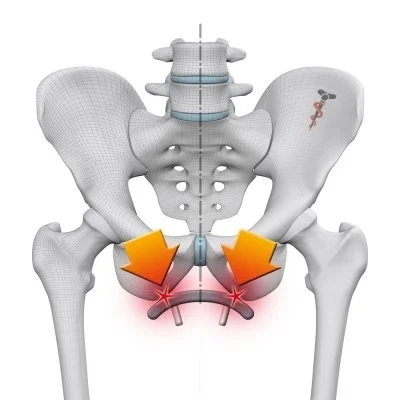
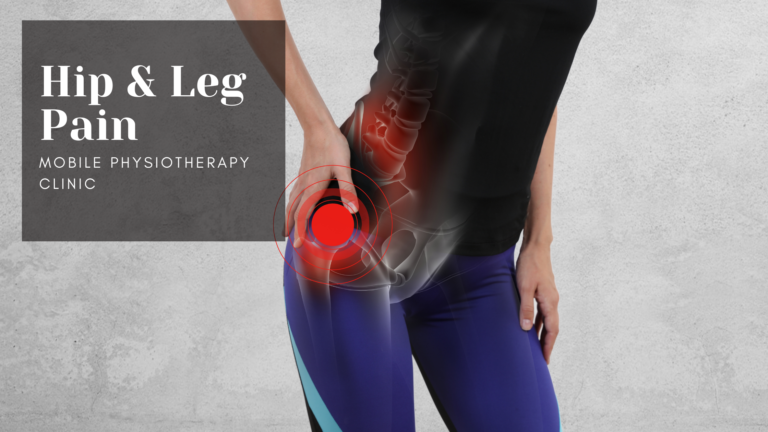
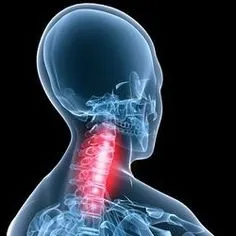

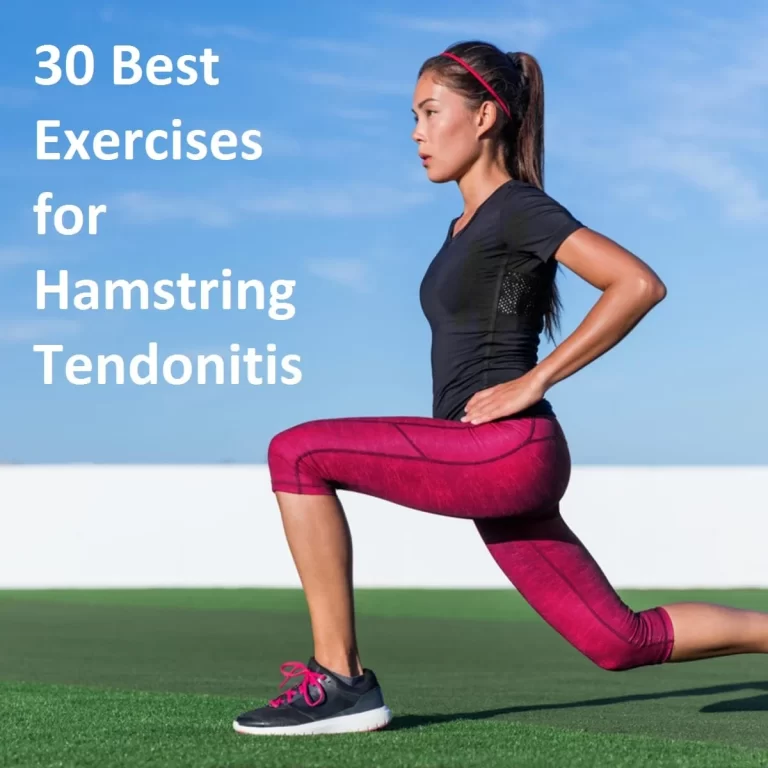

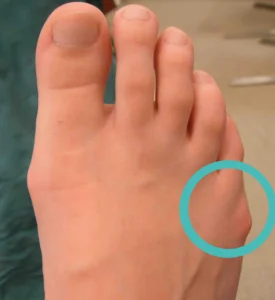
2 Comments